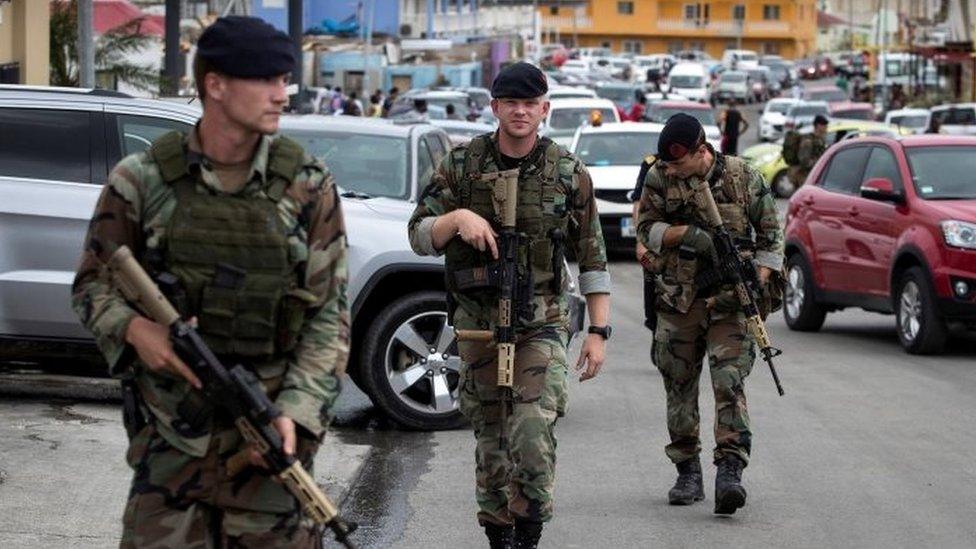Hurricane Maria strengthens as it nears Caribbean islands
- Published
Watch: The islanders caught between hurricanes
Hurricane Maria has strengthened to a major category three hurricane, US forecasters say, as it heads towards the Leeward Islands in the Caribbean.
It is due to hit on Monday night local time.
Maria is moving roughly along the same path as Irma, the hurricane that devastated the region this month.
The authorities fear Maria could whip up and throw the debris left behind by Hurricane Irma.
Lieutenant Colonel Paul Maynard, a Royal Marine deployed to the British Virgin Islands, told the Press Association the hurricane could pick the debris up, "spin it around, and throw it like ammunition".
"It could cause potentially more casualties and fatalities than Irma did," he added.
The UK's International Development Secretary, Priti Patel, said: "British troops, police and aid experts are working relentlessly to get help to the victims of Hurricane Irma. Those same individuals will now be tasked with also preparing for the impact of Maria."
Hurricane warnings have been issued for Guadeloupe, Dominica, St Kitts and Nevis, Montserrat, Martinique, St Lucia and the US and British Virgin Islands.
A hurricane watch is in effect for Puerto Rico, St Martin, St Barts, Saba, St Eustatius and Anguilla.
Some of these islands are still recovering after being hit by Irma - a category five hurricane which left at least 37 people dead and caused billions of dollars' worth of damage.
In its latest update on Monday, external, the US National Hurricane Center (NHC) said that Maria had maximum sustained winds of 200km/h (125mph).
They warned that heavy rainfall caused by the hurricane "could cause life-threatening flash floods and mudslides".
The eye of the storm is 100 miles east of Martinique, and Maria is moving west-northwest at about 13mph.
"Preparations to protect life and property should be rushed to completion," the NHC said.
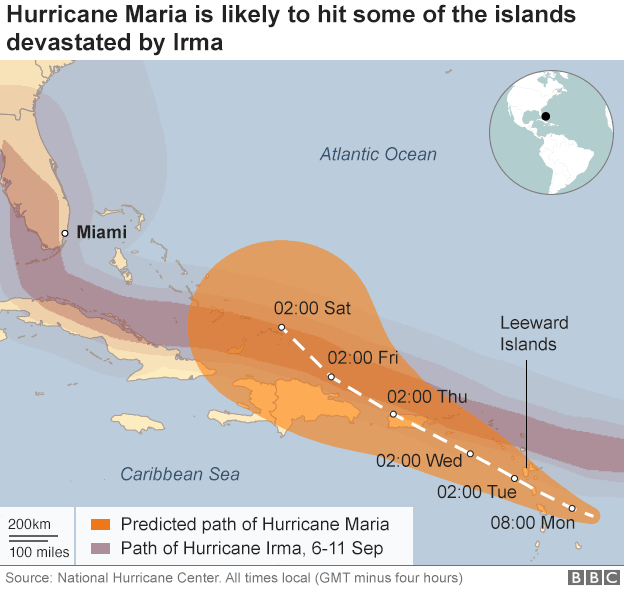
In the French territory of Guadeloupe, schools, businesses and government buildings have all been closed and severe flooding is predicted in low-lying parts of the islands.
Preparations have also begun in Puerto Rico, where Maria is expected to bring strong winds on Tuesday.
The Leeward Islands - where Maria will first strike - includes Antigua and Barbuda. The latter island was evacuated after being devastated by Irma.
The NHC says that Maria could produce a "dangerous storm surge accompanied by large and destructive waves" that would raise water levels by as much as 2.7 metres (9ft).
It also forecasts a maximum potential rainfall of 51cm (20in) in some areas of the central and southern Leeward Islands - including Puerto Rico and the US and British Virgin Islands - through to Wednesday night.
Drone footage of Saint-Martin after Irma
Earlier this month, Irma left more than two-thirds of homes on the Dutch side of the island of St Martin (known as Sint Maarten) uninhabitable, with no electricity, gas or drinking water.
The French government has said its side of St Martin - known as Saint-Martin - sustained about €1.2bn ($1.44bn; £1.1bn) in damage, with nine deaths across Saint-Martin and nearby St Barts.
A BBC team visited Caribbean islands that have been devastated by Hurricane Irma
On the British Virgin Islands, entire neighbourhoods were flattened.
After a visit to the area, UK Foreign Secretary Boris Johnson described the damage as something "you see in images from the First World War".
In pictures: Irma devastates British Virgin Islands
Virgin boss Richard Branson, who has a home in the Virgin Islands, has been tweeting ahead of the Maria's predicted arrival, warning people to stay safe.
Allow X content?
This article contains content provided by X. We ask for your permission before anything is loaded, as they may be using cookies and other technologies. You may want to read X’s cookie policy, external and privacy policy, external before accepting. To view this content choose ‘accept and continue’.
The Puerto Rican government has issued a statement saying it expects the hurricane to make landfall there as a category three on Tuesday.
The US territory escaped the worst of the damage from Irma - although it experienced widespread power cuts - and it has been an important hub for getting relief to islands that were more badly affected.
"Puerto Rico is our lifeline," Judson Burdon, a resident of Anguilla, told Reuters news agency. "We had two volunteer flights cancel because of the weather that is coming."
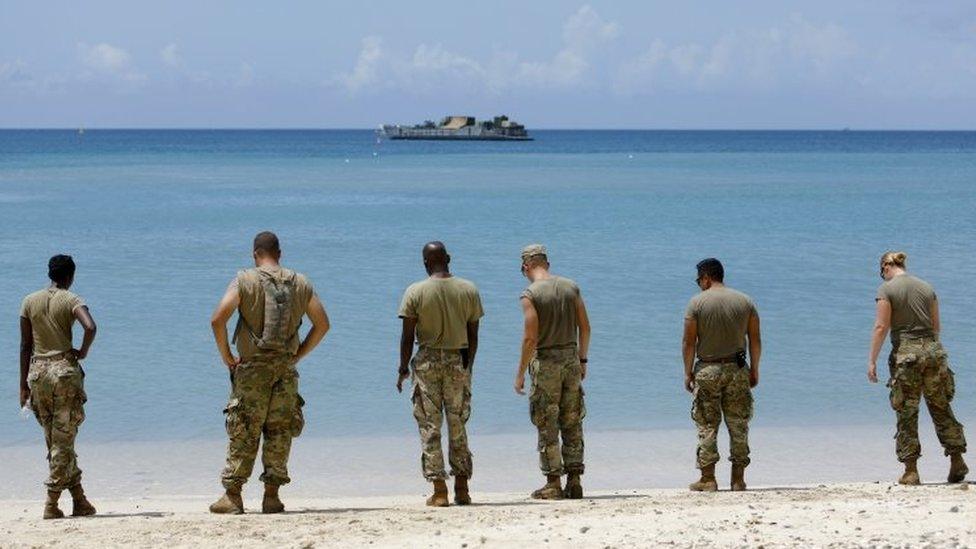
American military units were evacuated from the US Virgin Islands on Sunday
Irma also hit the US, where several dozen deaths were linked to the hurricane. Nearly 6.9 million homes were left without power in Florida, Georgia, North Carolina, South Carolina and Alabama.
A second hurricane, Jose, is also active in the Atlantic, with maximum sustained winds of 90mph.
The centre of the storm was about 265 miles east-south-east of Cape Hatteras, external in North Carolina, the NHC said in its advisory at 18:00 GMT on Monday.
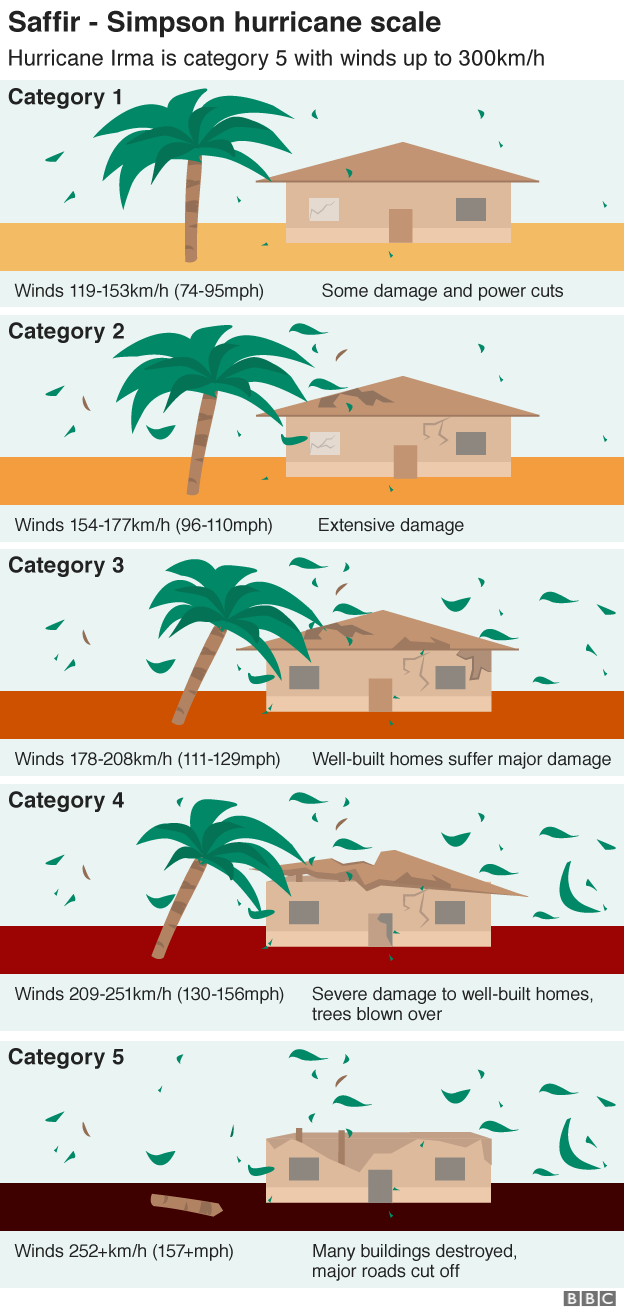
- Published11 September 2017
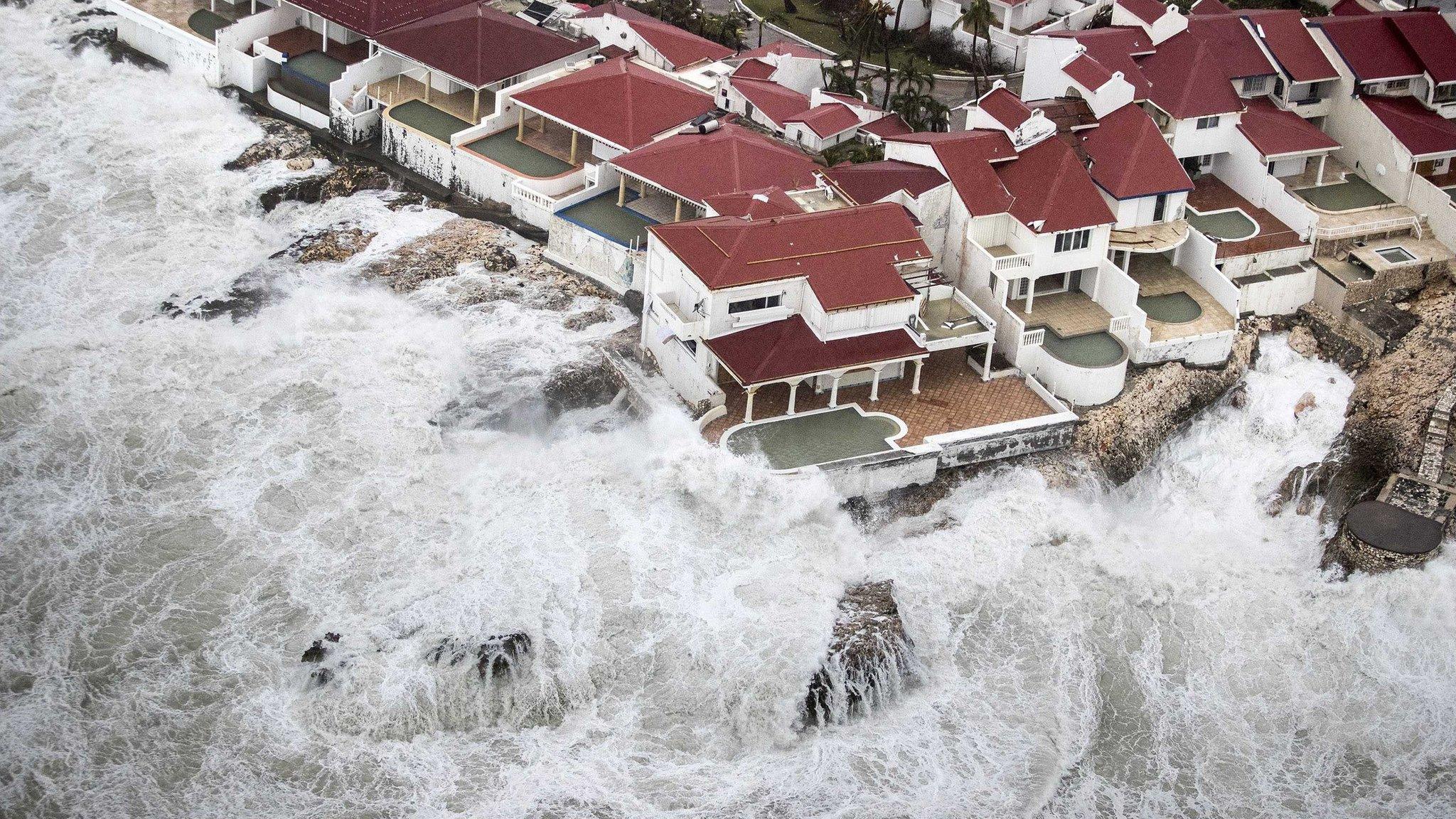
- Published8 September 2017

- Published15 September 2017
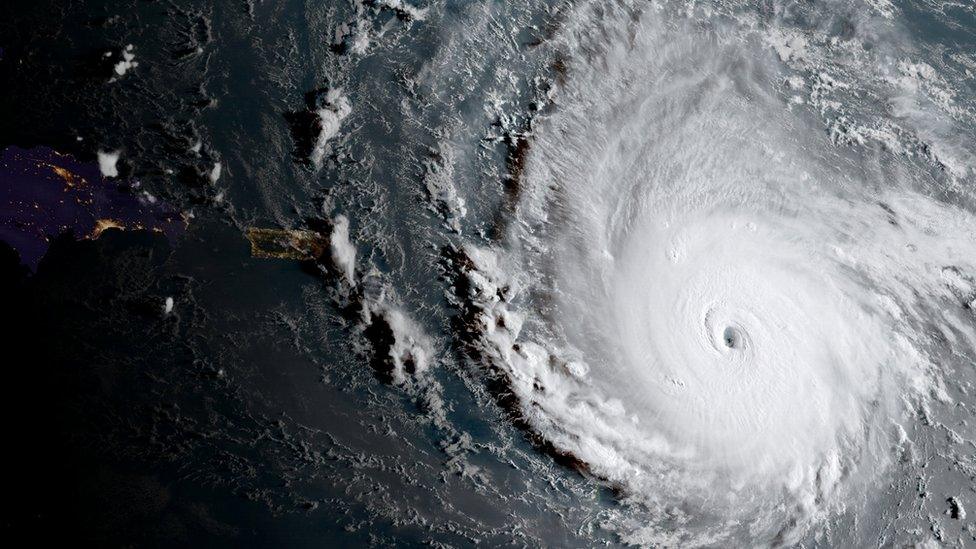
- Published8 September 2017
- Published8 September 2017
